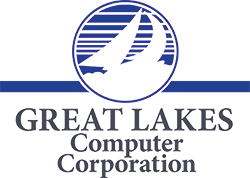What is Credential Phishing?
Credential phishing is a cyberattack where attackers steal the identification details of an individual in a business to obtain valuable information or disrupt functions. Phishing does not depend on weaker security features in your company’s system. It relies on human interaction.
Hackers scour social media sites like LinkedIn, Twitter, or Facebook for useful credential information and data. They then use the data to create nearly identical corporate emails and websites for theft. They use the list of stakeholders obtained from the targeted account to infiltrate the system in their next attack phase.
The End goal of most corporate credential phishing is to compromise passwords, authorize applications, and steal data for sale in cybercrime networks. It is easy for a hacker to compromise an entire system through one credential attack. Here are ways to augment cyber security in your system and prevent further damage.
Security Awareness Training
A secure system is useless if a hacker gets hold of your employee’s credentials. You can train your employees to identify and flag false and spoofed email links and content injection. Have parameters that block unapproved or suspicious applications, links, or sites.
However, this approach does not guarantee the safety of your organization’s online systems. The hacker can access your client’s website and send a suspicious link or use a senior management credential to give commands to authorize the release of confidential information.
Introducing A Network Layer Multi-Factor Identification
Once a hacker gets hold of one corporate credential, there is nothing much you can do to secure your system. Multiple identification levels to validate the identity of all stakeholders is a scalable approach that denies the intruder further access. It is also easy for the end-users to use.
For instance, in the case of content injection or executive fraud, the subordinate employee can request further authentication to approve potentially harmful demands to the company’s network.
Segment the Organization’s Network
A unified network authorizing access to all applications for valid users is a paradise for a hacker. Once the cyber attacker gets one credential, they can infiltrate the entire network. Enhance your cybersecurity by defragmenting your system to prevent hackers from gaining lateral ground.
Enforcing Device Policy
Cybersecurity risks increase with the number of devices allowed to access your system. You can reduce the threat risks by ensuring employees use authorized corporate devices for work purposes. Limit access control on personal devices such as phones and laptops. Install security features that track devices, locations, time, and commands in real-time.
Protect Your Stakeholder Credentials from Phishing
Credential phishing is a multifaceted problem requiring an equally complex cybersecurity solution. Great Lakes Computer Corporation has the resources and workforce to help secure your platforms from cyber attackers. Our expertise, knowledge base, and experience are essential in preventing credential phishing from weak links and loopholes in your network. Schedule an appointment with our knowledgeable staff for a complimentary consultation to act today.

